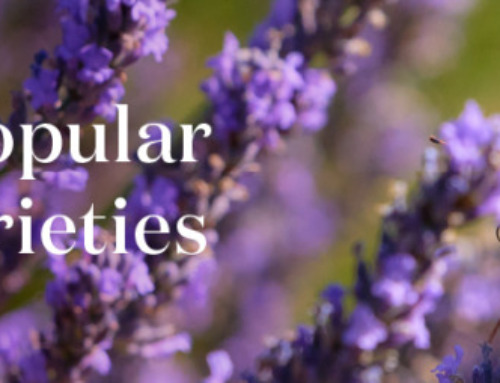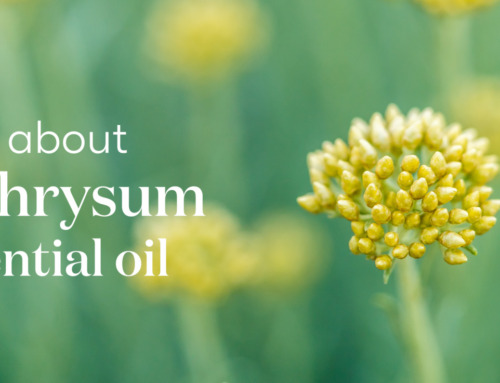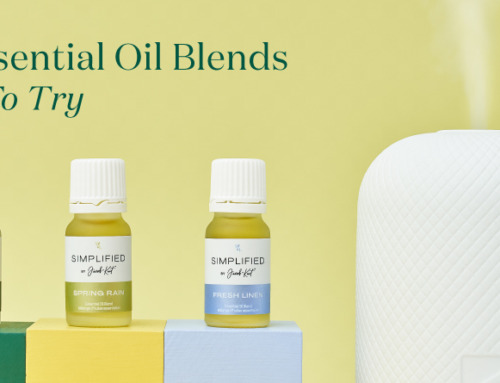One of Young Living Essential Oil’s most scarce and sought after products, helichrysum essential oil, is known for its restorative properties and provides excellent support to the skin, liver, and nervous systems.*
The following paragraphs are excerpts from a letter Dr. David Stewart recently sent to the Young Living Product Marketing Team regarding helichrysum in the marketplace. Thank you to Dr. Stewart for this expert explanation.
How Do You Know Your Helichrysum is Good?
by David Stewart, PhD
 Helichrysum is a universal oil with numerous applications. It is also expensive to produce. Useful oils that are expensive to produce create a temptation on the part of oil suppliers to cheat in various ways. They can take a real oil and dilute it with a colorless, odorless substance. They can extract the oil from a similar plant species that is inexpensive to grow and distill, and then manipulate it into what may appear as a more exotic oil by deleting certain compounds or adding synthetic compounds to imitate the fragrance or taste of the expensive oil they wish to imitate. They may also cut costs in the distillation by doing so at high temperatures and high pressures that significantly reduces the distillation time and, thus, saves labor and fuel. They may also extract some oils by petrochemical solvents which leave toxic traces in the finished oil. All of these shortcuts and deceptions result in oils that may fulfill flavor or fragrance standards, even the AFNOR standard, but that lack the full suite of compounds necessary for the oil to have healing properties.
Helichrysum is a universal oil with numerous applications. It is also expensive to produce. Useful oils that are expensive to produce create a temptation on the part of oil suppliers to cheat in various ways. They can take a real oil and dilute it with a colorless, odorless substance. They can extract the oil from a similar plant species that is inexpensive to grow and distill, and then manipulate it into what may appear as a more exotic oil by deleting certain compounds or adding synthetic compounds to imitate the fragrance or taste of the expensive oil they wish to imitate. They may also cut costs in the distillation by doing so at high temperatures and high pressures that significantly reduces the distillation time and, thus, saves labor and fuel. They may also extract some oils by petrochemical solvents which leave toxic traces in the finished oil. All of these shortcuts and deceptions result in oils that may fulfill flavor or fragrance standards, even the AFNOR standard, but that lack the full suite of compounds necessary for the oil to have healing properties.
One could synthesize a pretty good imitation of helichrysum in a laboratory that would closely mimic its fragrance, but contain none of its therapeutic qualities. Just combine the right proportions of synthetic [ingredients] and you would have an oil that, to most people, would smell exactly like helichrysum, but at a fraction of the cost of natural helichrysum. However, a person with a trained nose would not be fooled and would know the difference right away.
Some time ago, Young Living received what was to have been a year’s supply of helichrysum. As soon as Gary Young smelled it, he knew that neryl acetate, the main ingredient, was missing. He reported his analysis to Dr. Sue Chow, the head chemist in the Young Living Testing Laboratory, who did an analysis. Sure enough, Gary was right. There was no neryl acetate.
Gary rejected the shipment and returned it to the supplier. He refused to market a false oil to Young Living distributors, even though no one would have known unless they had an expert nose like Gary’s or a gas chromatograph to analyze it. That shipment was refused even though this meant that Young Living would have to do without helichrysum for an extended period of time. Such is the integrity of Young Living and its founder.
However, that batch of false helichrysum was not wasted. When it went back to its supplier, it was sold to another company who markets it as helichrysum. Either that company lacks the technical expertise to recognize a manipulated oil and has been duped by its wholesaler, or that company knows better but lacks sufficient integrity to refuse to [sell such an oil].
So how do you know your helichrysum is good? Unless you have the nose for it or the advanced laboratory equipment to analyze it, you can’t know. In the end, you can only know the quality of your oil by knowing a supplier who can identify the purity of a oil and whom you can trust.
In Young Living we have both the know-how and the integrity. When you buy Young Living helichrysum, you know it is good. Any other brand is anyone’s guess.
* This statement has not been evaluated by the Food and Drug Administration. This product is not intended to diagnose, treat, cure, or prevent any disease.





Spot on with this write-up, I truly believe that this web site needs much more attention.
I’ll probably be back again to see more, thanks for the
information!
We are manufacturers of essential oils from Bosnia and Herzegovina, working steam distillation of various medicinal plants such as immortelle, sage, fennel, heather, pine and other wild that grow wild in our country.
If you are interested in any collaboration contact: etericnoulje@gmail.com
Thank you.
Herpes: Just saw the comment on this. Went to a naturopath (N.D.) for shingles which is just another form of herpes virus. The MDs gave me meds that barely helped. The Naturopath gave me Lysine (1000 mg, 3x/day), Vit C (immune booster) and told me to drink as much ginger as possible (I put it in water and drink throughout the day. For a month I was not able to sleep from the pain. After 3 days of the N.D.s protocol, all the pain was gone (100%) and I slept through the night. POINT: Herpes virus can’t live in a lysine rich environment – same for the ginger. If you feel it coming on, start taking it! Or just take it anyway as a daily supplement and maybe it will never resurface. Be well!
I think it is very interesting to know what others think of this. Thanks for taking the time to write this, continue the good work
Great Post. Subscribed to Your Feed. THanks! Perfect Pitch Review | Pure Pitch Method Review | Learn Perfect Pitch
Great Post. Subscribed to Your Feed. THanks! Learn How to Play Guitar | Learn Guitar Online | Free Easy Guitar Lessons
That was a great post…I love this site…Thanks
Great post … I love this site…Thanks
Hey there, Great Articl! Feel free to submit your site to our Directory Free. Free Website Promotion
What a great post. That is what they were talking about at the capitol .. LOL
Shane Cauley from Cheyenne, Wyoming Wy.
cauley.shane@gmail.com or on FaceBook
Use instead of Google (Yahoo, Altavista whatever) and you’ll save some precious energy. After all, it’s up to us to care for the environment, right?
I just read that Swine Flu has Infected two children in Southern California. I feel so sorry for them.
I have been struggling with herpes for a long tie, I appreciate the information – it gives me hope. Maybe researchers will figure this wretched disease out before too long.
It is the coolest site,keep so!
[…] CT 1,8 cineol), Roman chamomile (Chamaemelum nobile), blue tansy (Tanacetum annuum), and helichrysum (Helichrysum […]